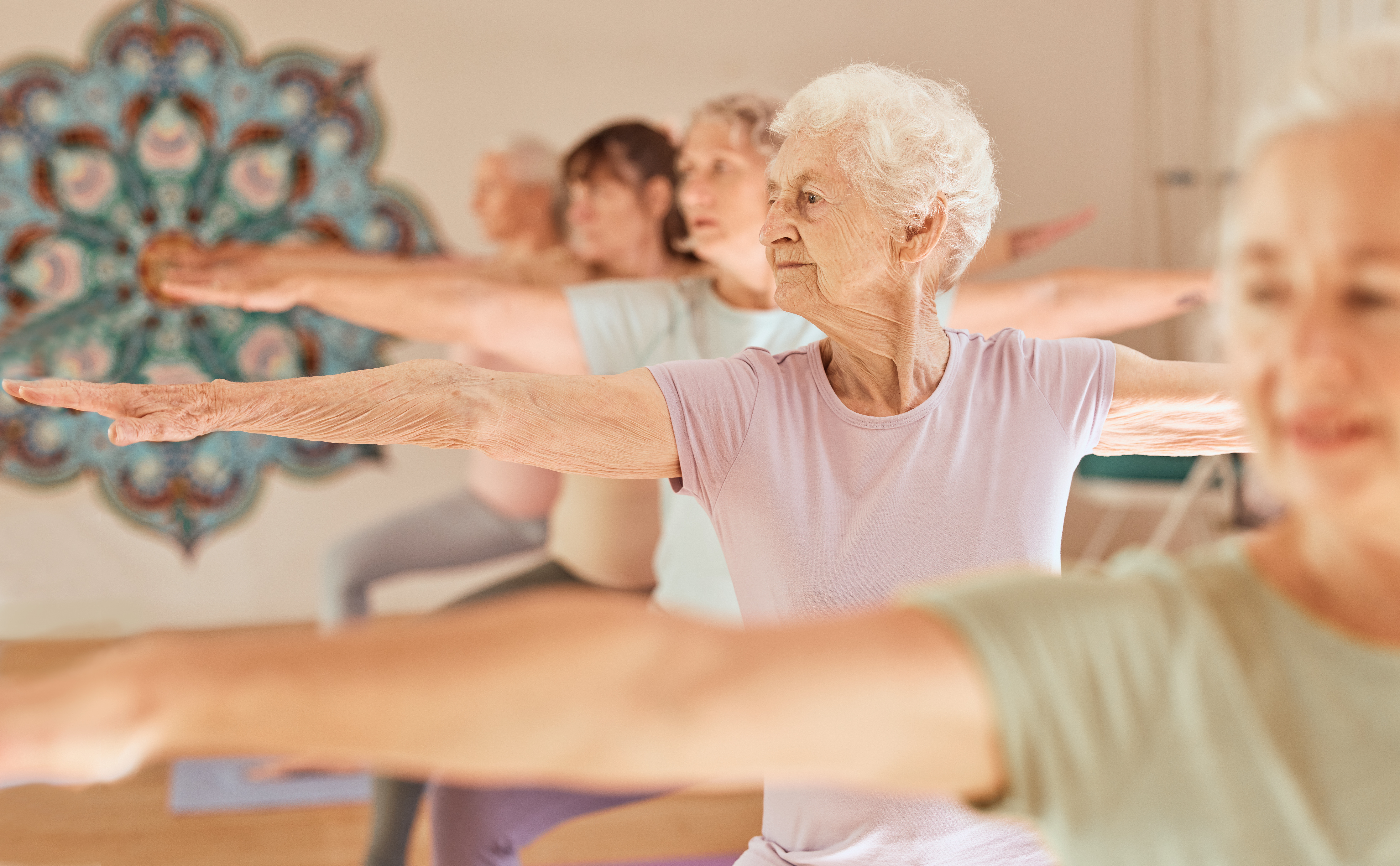Media release
From:
Popular type of yoga linked to higher rates of falls among older Australians
A major study from the University of Sydney has shown that a popular style of yoga increased falls in older people by a third, in a result that has surprised researchers.
The research, published in the Lancet Healthy Longevity, looked at the effect of an Iyengar yoga-based exercise program as part of a randomised control trial involving 700 participants aged 60 and over.
“There is plenty of evidence to suggest that exercise can prevent falls in older people but there are no studies that specifically looked at yoga as a fall prevention strategy,” said senior author Professor Anne Tiedemann, Healthy Ageing lead at the Institute for Musculoskeletal Health, which is a joint initiative between the University of Sydney and Sydney Local Health District.
“We wanted to fill this gap in knowledge and carry out a study to test our idea that yoga could improve balance and therefore prevent falls – but surprisingly, our study found the opposite,” Professor Tiedemann added.
Falls are a serious concern for older Australians, with around a third of people aged over 65 living in the community experiencing one or more falls each year. Every day, 400 older Australians are hospitalised and 17 lose their lives as a direct result of a fall.
Carrying out the study
The research team recruited 700 people aged 60 and over who did not currently practise yoga. Participants were split into two evenly sized groups and randomly assigned to take part either in an online instructor-led Iyengar yoga-based exercise program or a self-guided seated relaxation yoga program.
The research program lasted 12 months, with participants in each group asked to report how many falls they had each month.
Iyengar-style yoga was chosen as it is considered an easier option for older people with its focus on holding postures for longer durations and its use of props such as blocks and chairs, which provide stability and control compared to the rapid flow movements typical of other yoga styles, such as Vinyasa.
Comparing the number of falls in the intervention group versus the control group
Across the 12-month study period, researchers found that there were 33 percent more falls in the yoga-based exercise group compared to the relaxation control group, although there was no increase in the number of falls that resulted in injury in the yoga-based exercise group.
The study also found that the intervention may have increased the fall risk among certain groups, including those who hadn’t had a fall before, those who were highly active, and those who rated their balance as good or excellent.
Why did Iyengar yoga increase incidence of falls?
Professor Tiedemann said: “We suspect that one of the reasons for the higher incidence of falls could be that the people who were in the Iyengar yoga group gained more confidence and so pushed themselves to do activities outside of the class that they normally wouldn’t do.
“It is also possible that Iyengar yoga’s practice of holding fixed positions, rather than moving between different poses, may be less helpful in improving balance and not specific enough to improving the ability to do everyday activities and hence prevent falls.
“The results demonstrate the complexity of preventing falls in older age, which occur due to a combination of the individual’s physiology, the activity they are undertaking and their environment.”
Researchers have also suggested that the fact that the yoga lessons were delivered online, rather than in person, may have influenced the program delivery and outcomes.
First author Dr Juliana Oliviera, who worked on the study while at the University of Sydney before taking up a position at the Gold Coast University Hospital said: “The intention was to run the classes in person but, because the study took place during COVID-19, we had to move classes online. As a result, the instructors often prioritised safety over introducing more challenging exercises, which could have had an impact on falls.
“Some participants also said they found it harder to push themselves without the same level of supervision as in-person classes, which meant progress was slower and certain balance postures weren’t fully achieved.”
Despite the incidence of falls increasing among the Iyengar group, the yoga program was well received and did have positive impacts on other aspects of the participants’ health and wellbeing. People in the yoga group were more likely to achieve personal goals around exercise and strength, such as improving their ability to get up from the floor or using the stairs with greater confidence.
Dr Oliviera said: “Although Iyengar yoga may not be a good form of exercise to prevent falls, especially if taught online, it can have other positive health benefits. Older people who want to try yoga should speak to their doctor to get advice about how to stay safe while exercising.”
The researchers also highlight that other balance-based exercise such as squats, lunges and heel-raises can be beneficial for older people as a way to reduce falls.



 Australia; NSW
Australia; NSW



